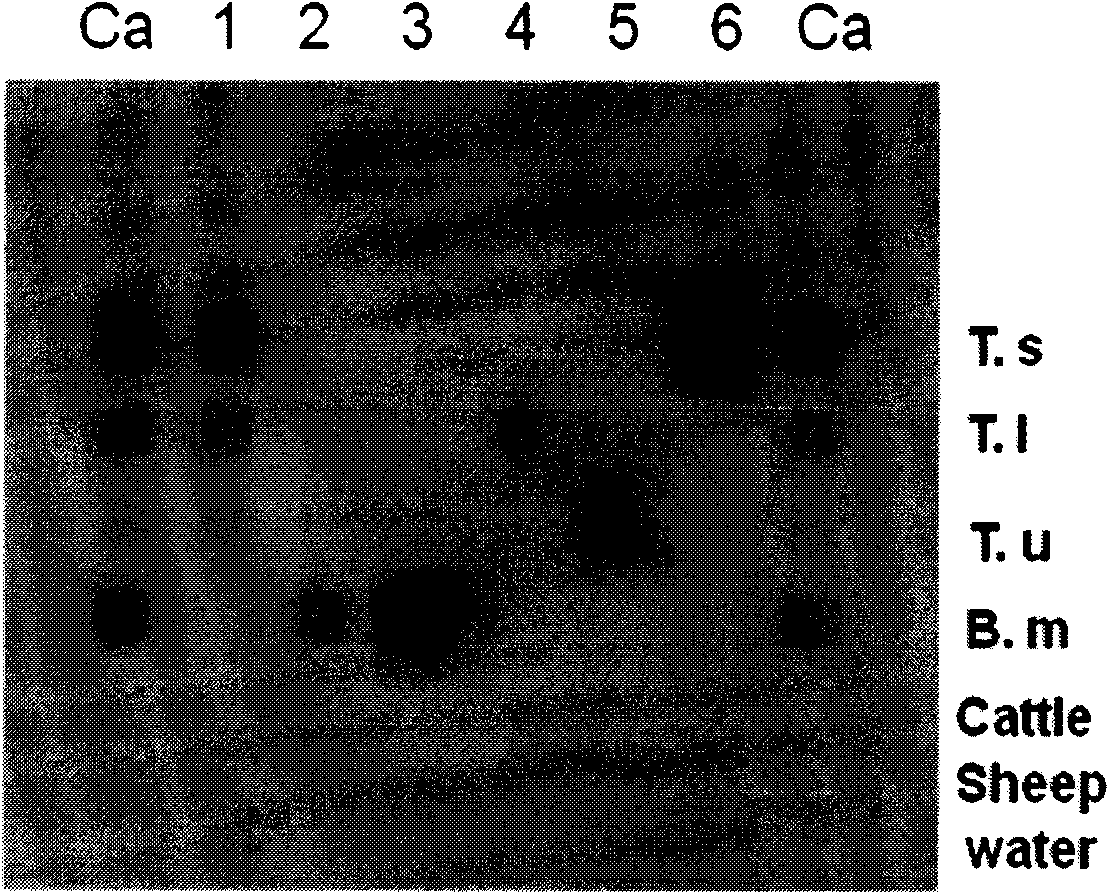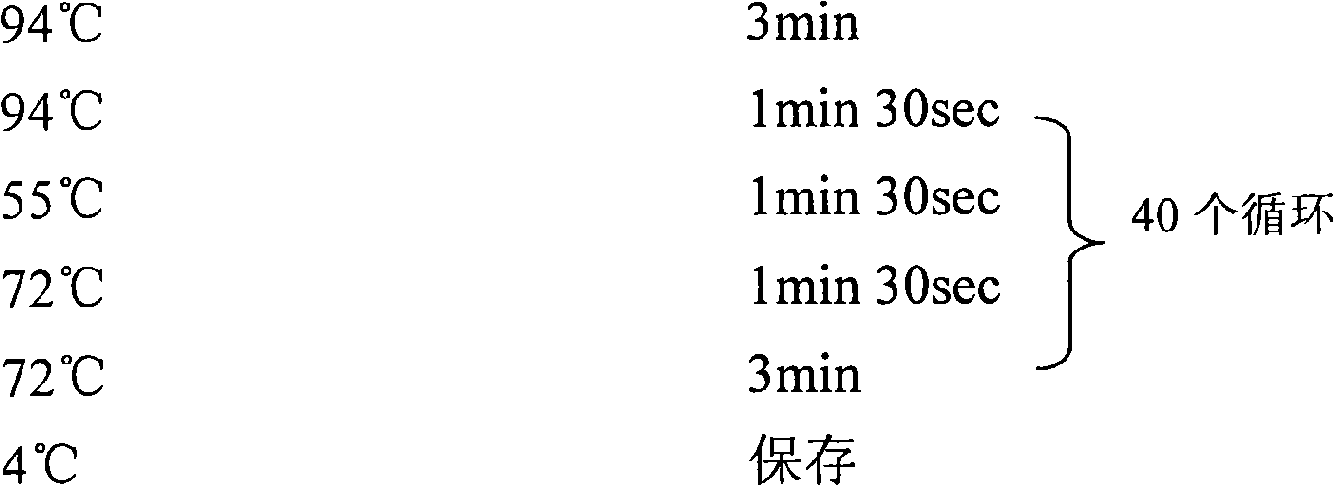Membrane for detecting cattle and sheep Giardia in Haemaphysalis qinghaiensis
A technology for piriform worms, cattle and sheep, applied in the field of detection membranes, can solve the problems that it is difficult to rule out cross-reactions of different species, mixed infections cannot be detected at the same time, false positives and missed detections, etc.
- Summary
- Abstract
- Description
- Claims
- Application Information
AI Technical Summary
Problems solved by technology
Method used
Image
Examples
Embodiment Construction
[0016] 1. Design and synthesis of primers and probes
[0017] The specific oligonucleotide sequences of Theileria and Babesia were designed based on the 18S rRNA gene sequence of each species. Design a pair of primers with a fragment size of 480bp-491bp in the conserved region at both ends of the V4 hypervariable region of the Theileria and Babesia 18S rRNA gene sequences, wherein: upstream primer: RLB-F (5-gaggtagtgacaagaaataacaata-3) , Downstream primer: RLB-R (biotin-5-tcttcgatcccctaactttc-3), designed according to the V4 hypervariable region of the determined 18S rRNA gene sequence for Babesia mosoni, Theileria sinensis, Theileria lushi and Theileria yoshii Four specific oligonucleotide probes of different worm species of worms (problem here is whether those skilled in the art can also design these four specific oligonucleotide probes with the current record, if not The technology and related requirements for designing probes need to be given), namely: B.m, T.s, T.l and T...
PUM
 Login to View More
Login to View More Abstract
Description
Claims
Application Information
 Login to View More
Login to View More - R&D
- Intellectual Property
- Life Sciences
- Materials
- Tech Scout
- Unparalleled Data Quality
- Higher Quality Content
- 60% Fewer Hallucinations
Browse by: Latest US Patents, China's latest patents, Technical Efficacy Thesaurus, Application Domain, Technology Topic, Popular Technical Reports.
© 2025 PatSnap. All rights reserved.Legal|Privacy policy|Modern Slavery Act Transparency Statement|Sitemap|About US| Contact US: help@patsnap.com



